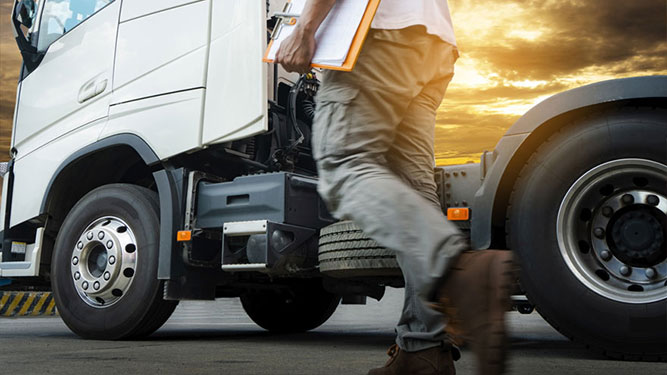Introduction
For any UK operator running heavy goods vehicles (HGVs) or passenger service vehicles (PSVs), tachograph compliance is not optional — it is a legal requirement. Since May 2006, almost all vehicles first registered in the UK and used for commercial haulage in scope of the EU Drivers’ Hours rules must be fitted with a digital tachograph. The system is designed to ensure drivers stick to safe driving hours, record rest periods accurately, and provide evidence in case of roadside checks or DVSA audits.
Failing to comply can result in fines, prohibitions, and even the loss of your Operator’s Licence. In this blog, we’ll explain what digital tachographs are, your responsibilities as an operator and driver, and how to stay compliant while avoiding unnecessary penalties.
What is a Digital Tachograph?
A digital tachograph is an electronic device fitted to a vehicle that records driving time, speed, distance, and rest periods. Data is stored securely on both the vehicle unit (VU) and the driver’s smart card, which is issued by the DVLA. Unlike analogue charts, the digital system is more accurate and harder to falsify, giving enforcement agencies such as the DVSA greater confidence in the integrity of the data.
Who Needs to Use a Digital Tachograph?
Digital tachographs must be used by:
– HGVs over 3.5 tonnes (with some exemptions such as certain agricultural or emergency vehicles).
– PSVs with more than 9 passenger seats.
– Any operator working under EU Drivers’ Hours rules, which apply to most commercial haulage and passenger transport work in the UK and across Europe.
Operator Responsibilities
As an operator, you are legally responsible for ensuring your drivers use tachographs correctly and that records are managed properly. Your main duties include:
1. Downloading data – Vehicle unit data must be downloaded at least every 90 days, while driver card data should be downloaded at least every 28 days.
2. Storing records – Data must be securely kept for a minimum of 12 months (often longer if used in disciplinary or legal cases).
3. Monitoring compliance – Regularly checking driver activity reports to spot infringements such as exceeding driving hours or insufficient rest periods.
4. Training drivers – Making sure drivers know how to use their digital tachograph correctly, insert their card at the start of the shift, and make manual entries when required.
5. Providing records to authorities – Being able to supply tachograph data to the DVSA or the Traffic Commissioner if requested.
Driver Responsibilities
Drivers also carry direct responsibilities under tachograph regulations, including:
– Carrying their driver card at all times and using it whenever in scope.
– Making accurate manual entries for periods when they are working but not driving, or if the tachograph is not available.
– Ensuring card downloads are up to date and not overdue.
– Reporting faults with the tachograph immediately to the operator.
Common Infringements and Penalties
The DVSA has the power to issue on-the-spot fines of up to £300 for tachograph offences. Multiple offences can quickly add up, leading to thousands of pounds in penalties. More serious or repeated breaches may be referred to the Traffic Commissioner, risking suspensions, curtailments, or even the revocation of your Operator’s Licence.
Common infringements include:
– Exceeding maximum daily or weekly driving limits.
– Failing to take correct daily or weekly rest.
– Not using a driver card or using someone else’s card.
– Not downloading or storing tachograph data on time.
– Tampering with or attempting to falsify tachograph records (a very serious offence).
How to Stay Compliant
Staying compliant with digital tachograph rules is straightforward if you have proper systems in place:
1. Set up regular downloads – Use software to automatically alert you when driver card or vehicle unit downloads are due.
2. Invest in tachograph analysis tools – Professional software can flag infringements, helping you take corrective action before they escalate.
3. Train drivers and transport managers – Regular training ensures everyone understands their obligations.
4. Keep policies up to date – Have a written tachograph compliance policy as part of your broader Operator Compliance Risk Score (OCRS) strategy.
5. Audit your systems – Regular internal checks or external compliance audits help you identify weaknesses before the DVSA does.
Final Thoughts
Digital tachographs are more than just a box on your dashboard; they are a legal safeguard designed to protect drivers, operators, and the public. For UK operators, compliance is not negotiable. By keeping on top of downloads, training, and analysis, you can avoid costly fines and protect your Operator’s Licence.
If you are unsure about your tachograph obligations or have concerns about compliance, it’s wise to seek professional advice or arrange a compliance audit. Prevention is always cheaper than penalties.





